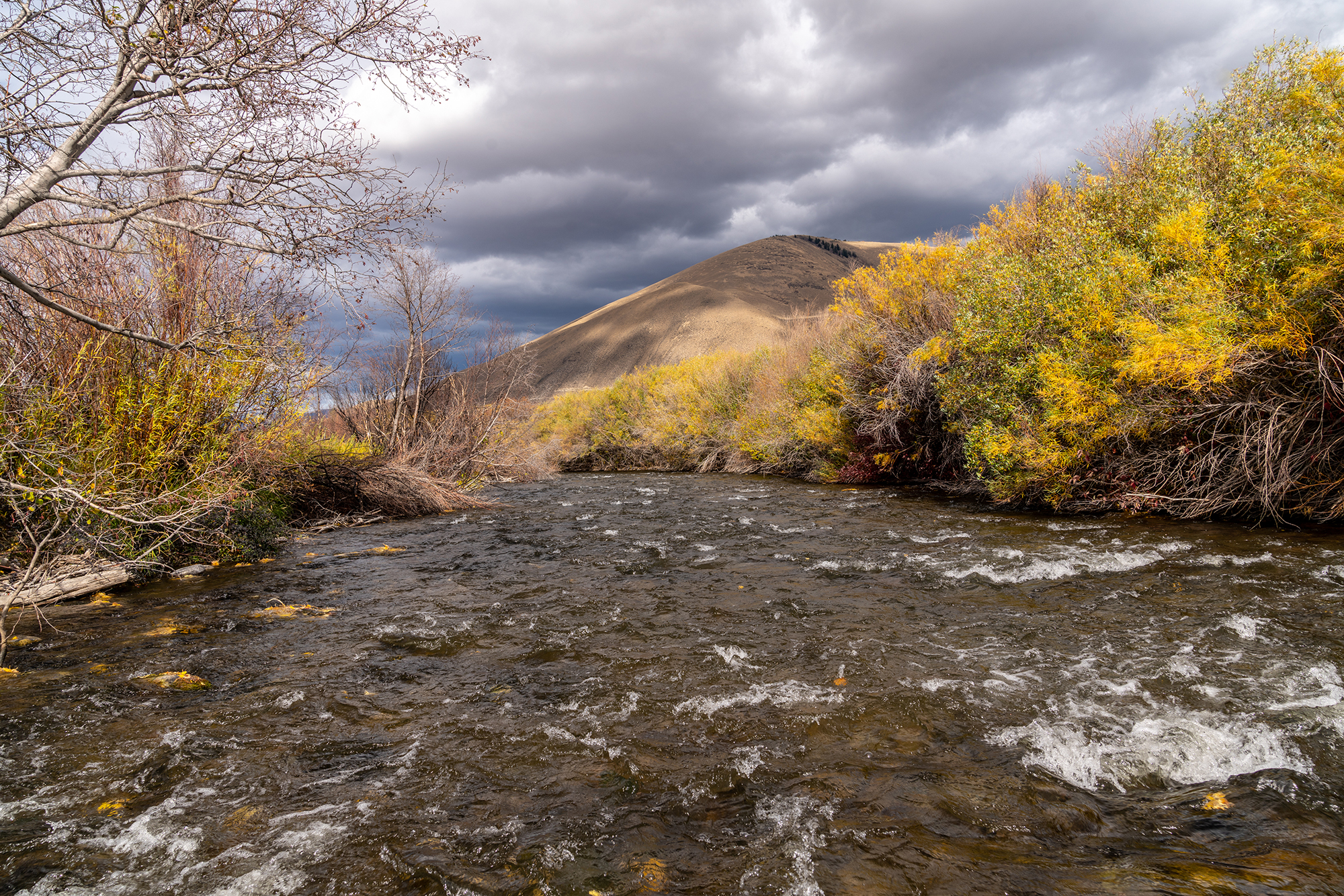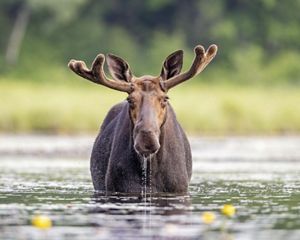
Columbia Basin Salmon Recovery
Once abundant, Columbia River salmon are now perilously close to extinction.
Salmon and steelhead are integrally tied to the values, local economies and natural systems of the Pacific Northwest. Beginning life in the gravel beds of cold, clear freshwater streams high in Idaho mountains, salmon make a remarkable journey―swimming 850 miles to the Pacific Ocean, growing to adulthood at sea, and then returning to the streams of their birth. Along the way they deliver nutrients and high-quality protein on which some 140 species of plants and animals depend.
Once abundant in the Columbia River and Snake River, and other tributaries, salmon are now perilously close to extinction. Since the 1950s, many salmon populations in Idaho have declined by more than 80%, with some populations in steeper decline. Dwindling numbers are driven by climate change, poor ocean conditions, habitat loss and degradation, barriers to migration to and from the ocean and a river management system that is out of alignment with nature.
Quote
Dwindling numbers are driven by climate change, poor ocean conditions, habitat loss and degradation, barriers to migration to and from the ocean and a river management system that is out of alignment with nature.

Average salmon returns are declining at an alarming rate, jeopardizing the sustainability of fishing, especially for regional Tribes. Since time immemorial, Indigenous Peoples of the Pacific Northwest have identified themselves with salmon and woven them throughout their culture as a foundation for diet, tradition and lifeways. But now, cultures, ecosystems and species that evolved alongside salmon sit on the cusp of devastating correlated impacts.
Thriving wild salmon must be part of the Pacific Northwest’s future. The challenges facing salmon are complex and interconnected. Lasting solutions require considerations across economic interests, energy needs, cultural imperatives and environmental conservation. With decades of experience working with partners to restore critical habitat, The Nature Conservancy is uniquely positioned to support the recovery of Idaho’s salmon and steelhead.
Idaho Highlights


Project Highlight
Protecting and Restoring Salmon Habitat
The Lemhi River is one of the top salmon spawning tributaries in Idaho, meandering 60 miles through Central Idaho before joining the Salmon River. For more than 20 years, TNC and partners have worked to protect spawning grounds in the upper reaches of the Lemhi River. But in addition to spawning habitat, juvenile fish need specific habitat conditions further downstream to grow strong for their 850-mile journey to the Pacific Ocean.
Continuing the region’s legacy of partnership-driven conservation, TNC collaborated with partners to address this critical need and support salmon recovery in this significant river. TNC secured a conservation easement that will protect Split River Ranch, a 257-acre property containing a 1.5-mile-long high-priority stretch of the Lemhi River that will provide much-needed habitat for juvenile salmon. Science indicated that this part of the river was especially important for young salmon.
The next step will include extensive habitat restoration along the river while the property remains a working ranch for the landowner’s family. The restoration efforts will create more ideal conditions for juvenile salmon by slowing down stream flows, enhancing habitat diversity in and around the stream and improving water quality. This effort addresses just one of the many solutions needed to recover salmon in Idaho. By providing quality habitat, we are supporting salmon through key stages of their life cycle. As we work toward a future with flourishing and abundant salmon populations, restoration projects like this will ensure they have the habitat they need to thrive.

Project Highlight
Working Lands and Thriving Ecosystems
Animals, both wild and domestic, shape the landscape and contribute to the ever-changing nature of ecosystems. Activities such as grazing and building structures like beaver dams can alter vegetation and water flows, which affects native species like salmon.
TNC collaborates with ranchers to promote and implement sustainable grazing practices, such as virtual fencing technology that keeps herds out of sensitive salmon habitat, that benefit both the environment and livestock productivity. By integrating conservation efforts with working lands, we aim to enhance biodiversity, improve water quality and ensure long-term ecosystem health.
In addition to working with landowners, TNC also works with nature’s craftiest engineers, beavers. In Idaho, we are building beaver dam analogs―a human-made structure that mimics the function of natural beaver dams. These analogs help keep more water in the system so that flow lasts longer in the season and stays high in the system where it can remain cold enough to support salmon. In addition to restoring natural functions in streams, beaver dam analogs create habitat that encourage beaver to return—making our work self-sustaining.
Stay connected for the latest news from nature.



